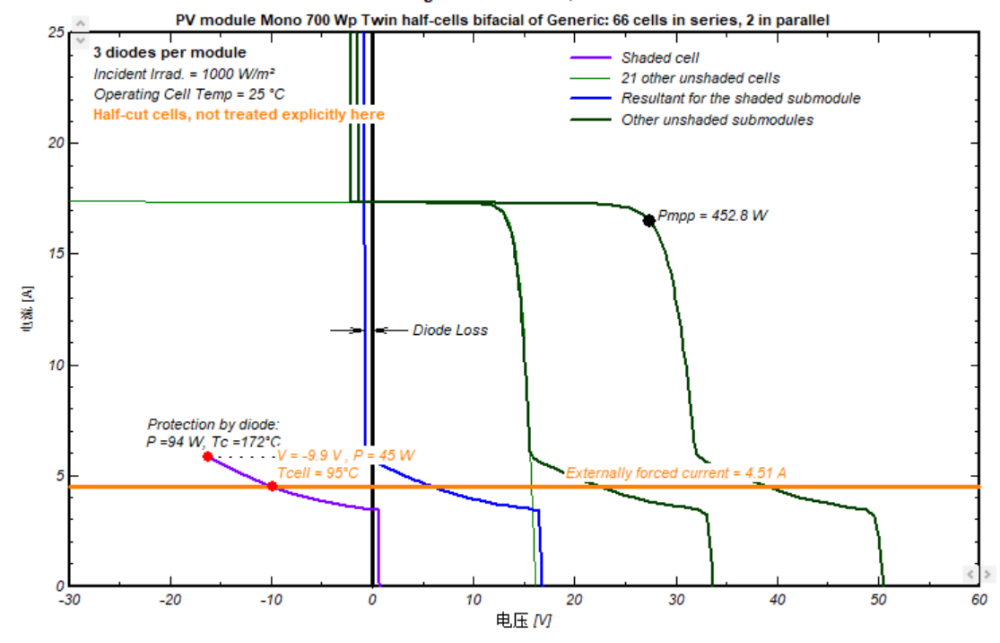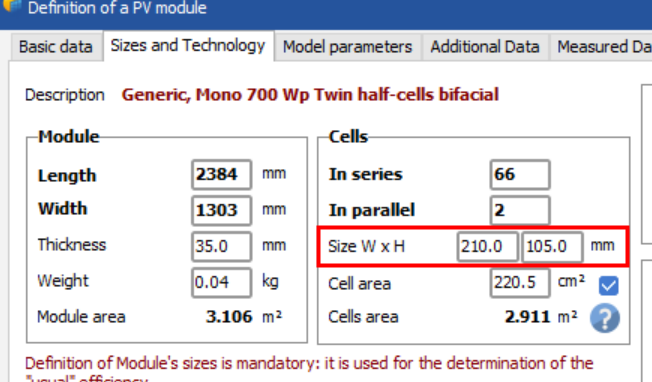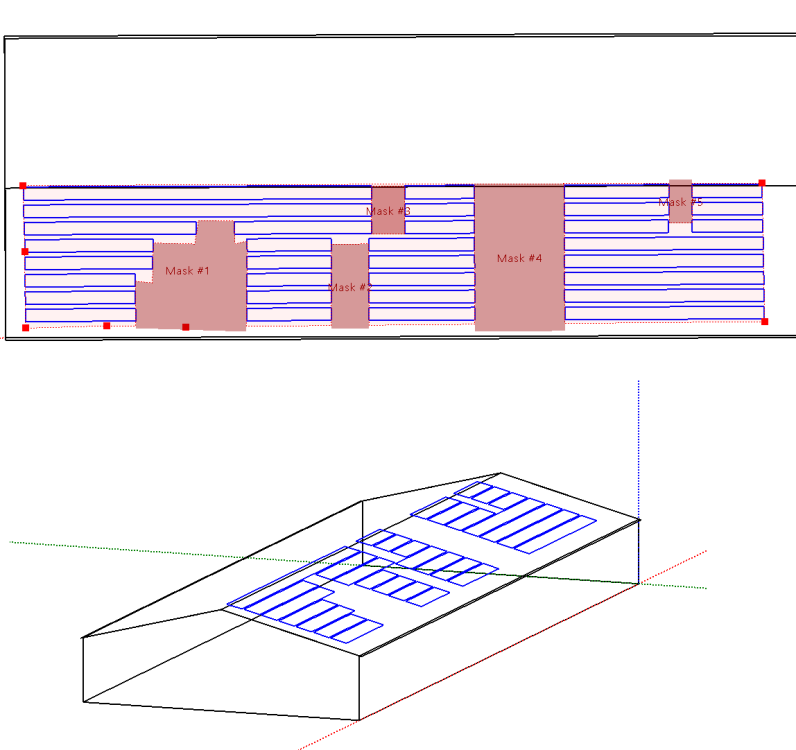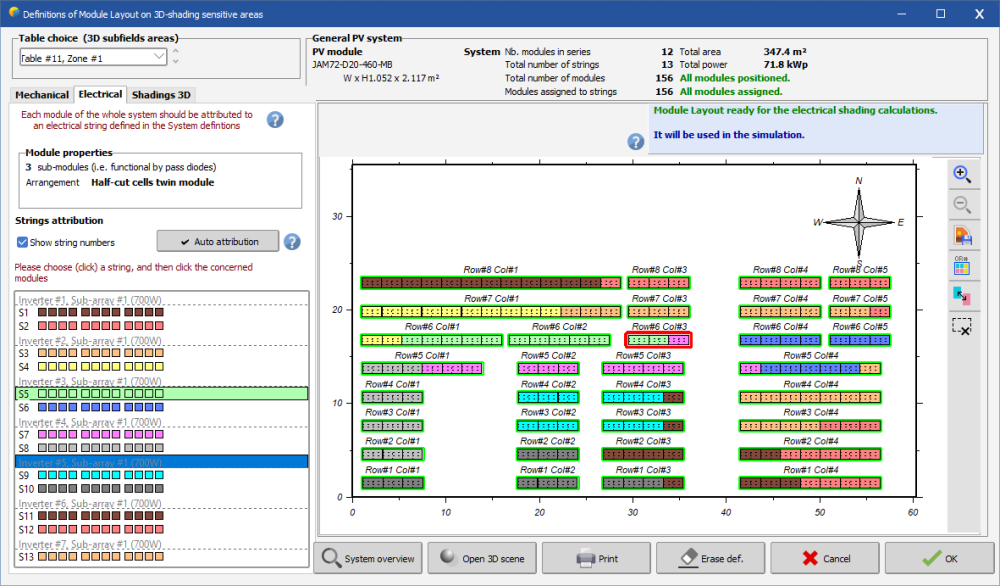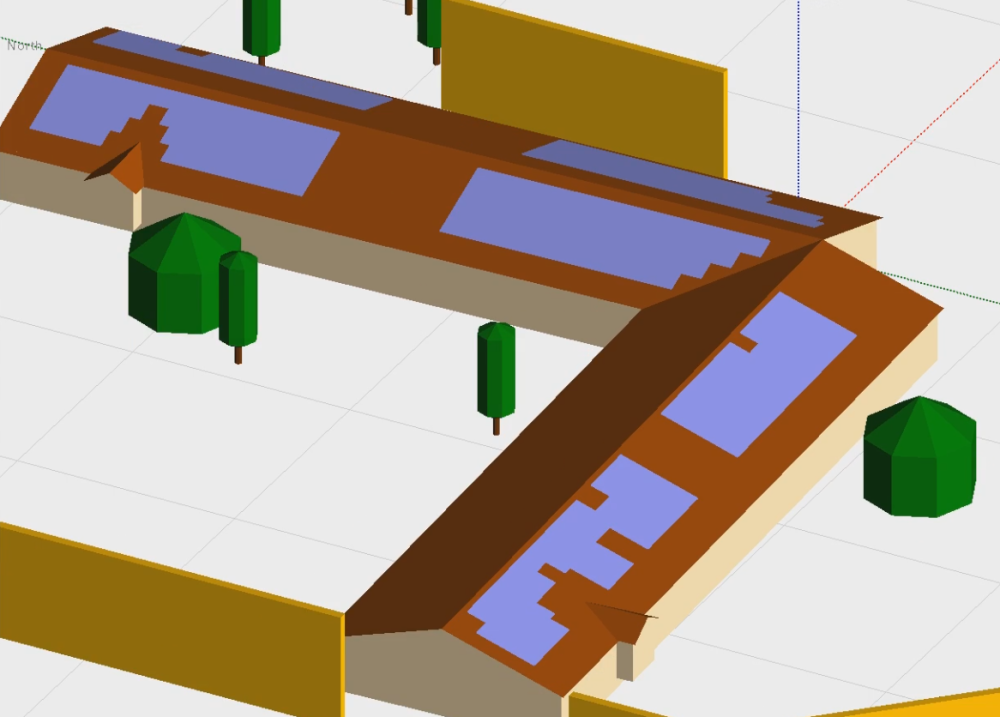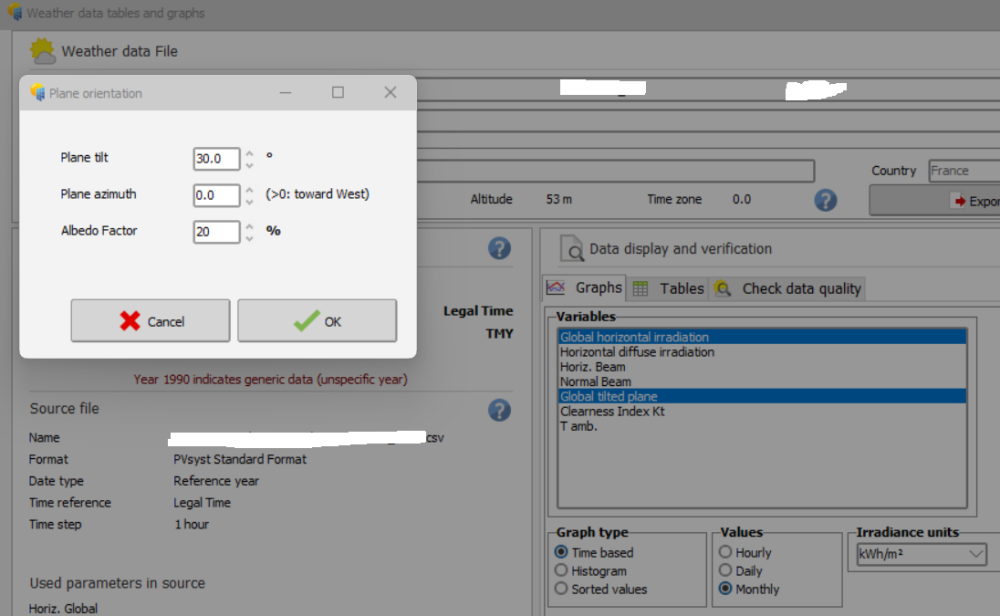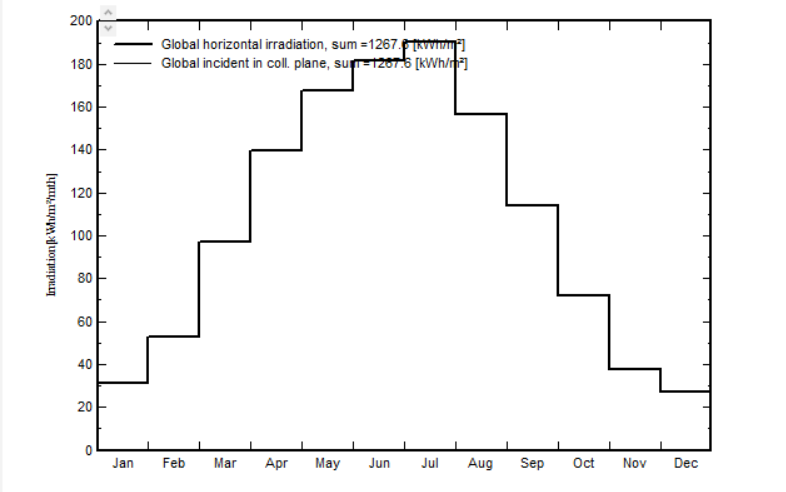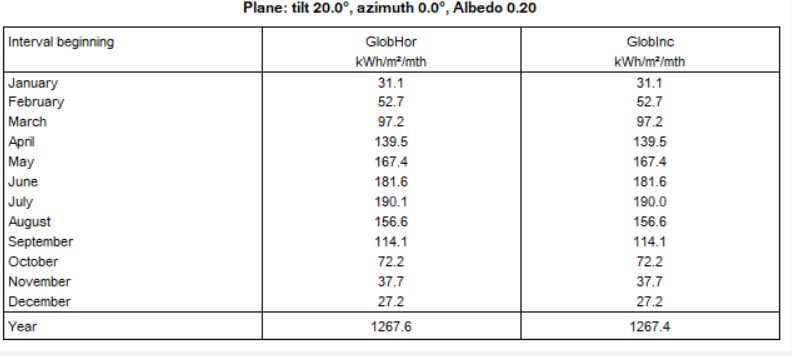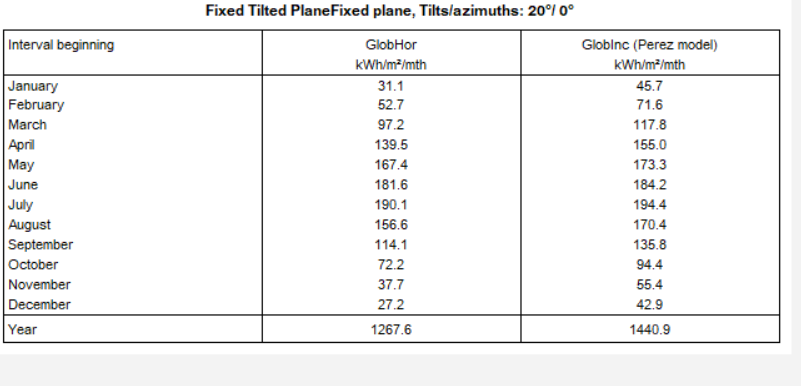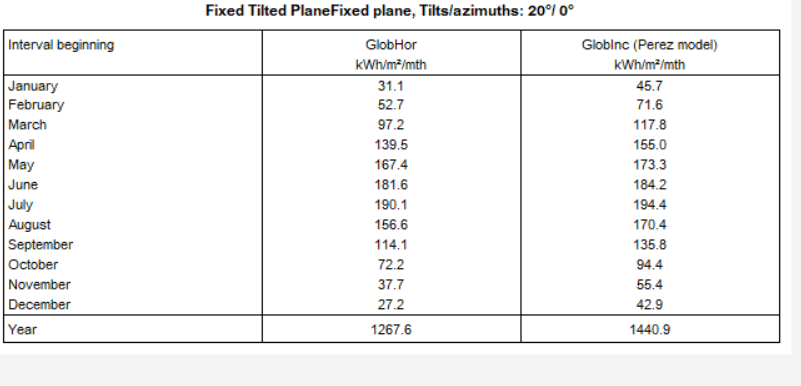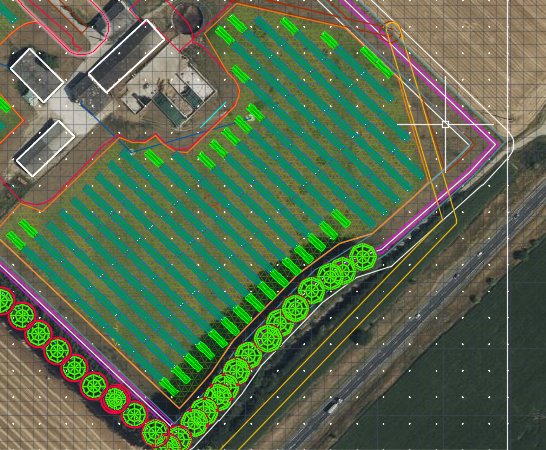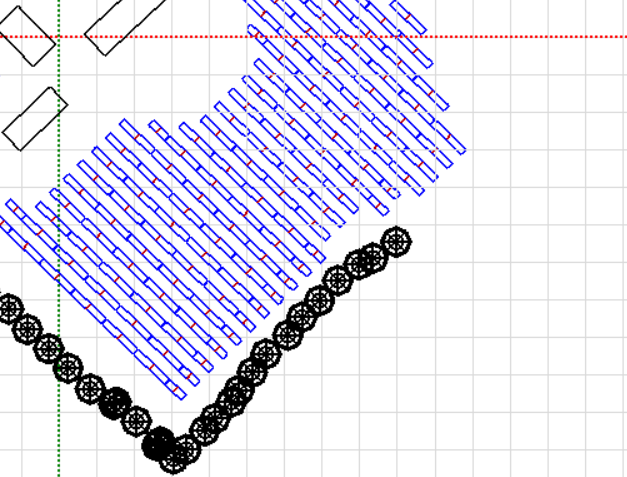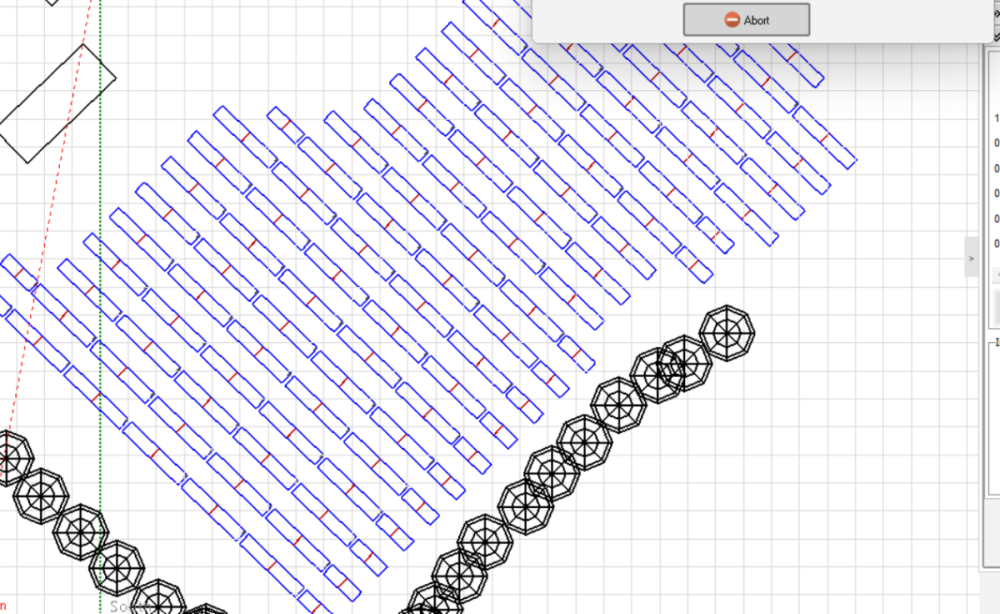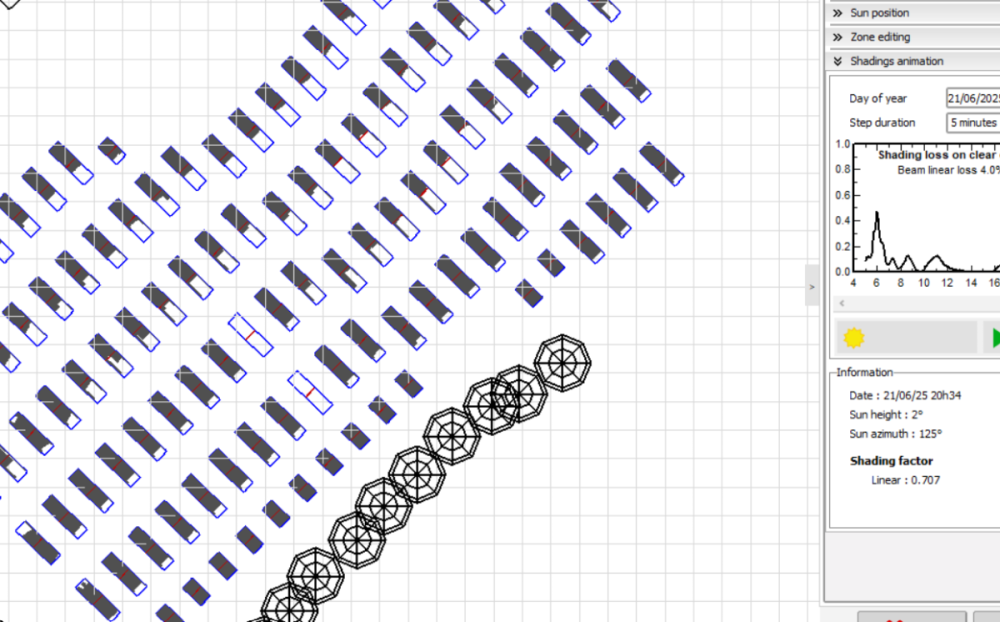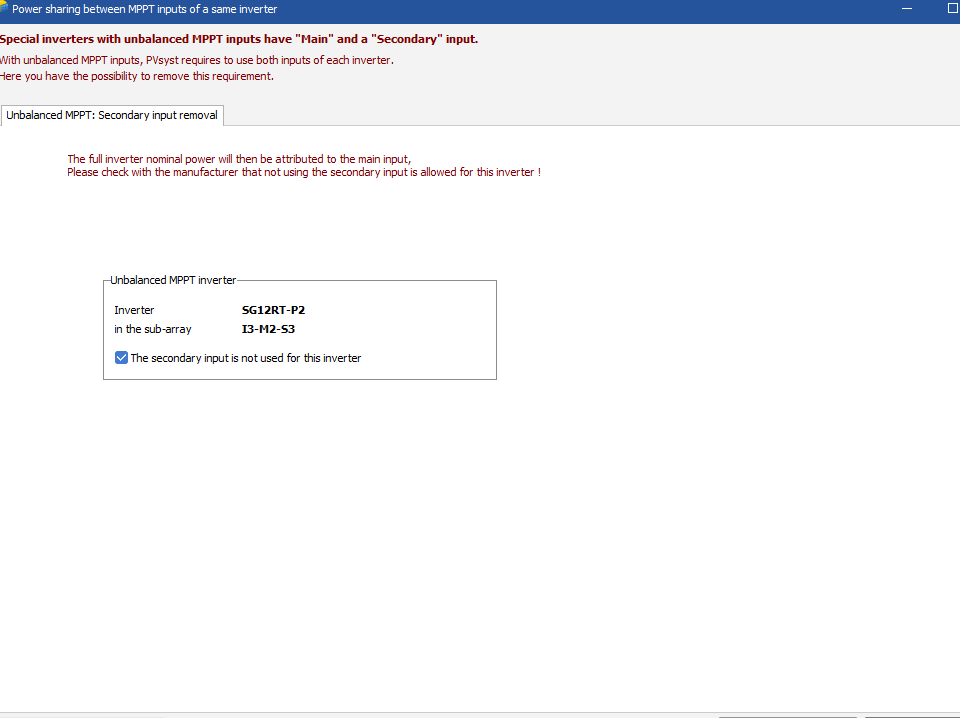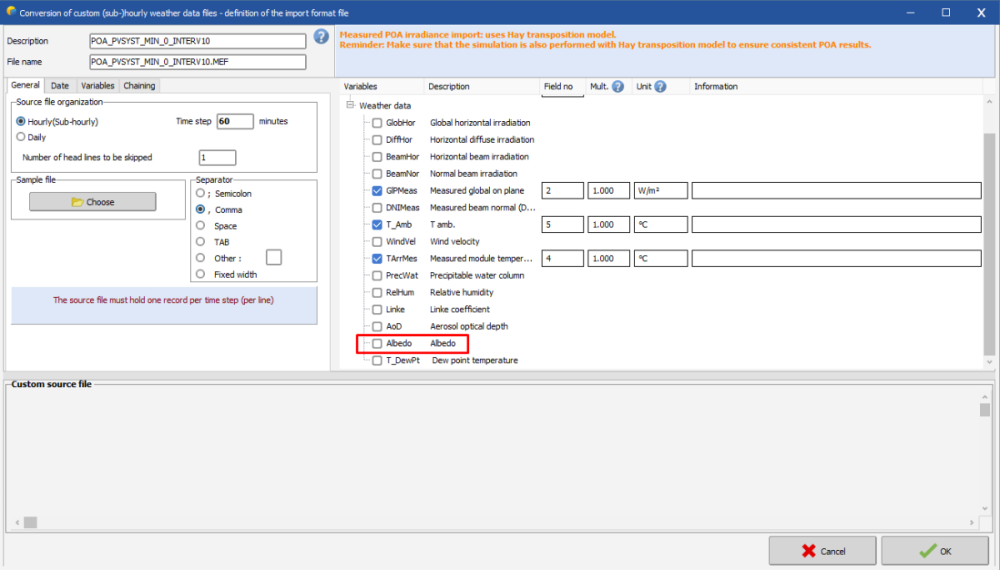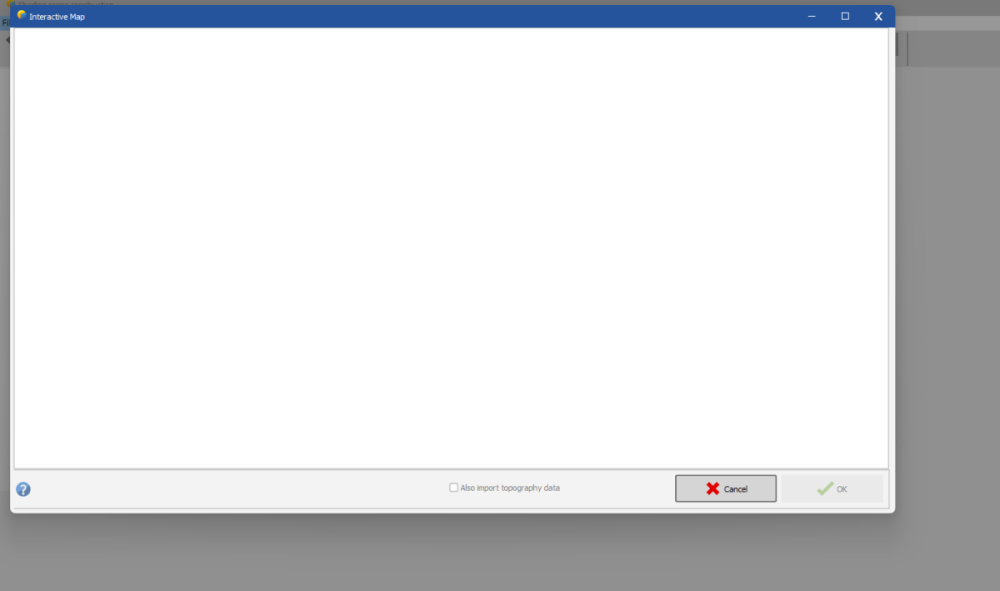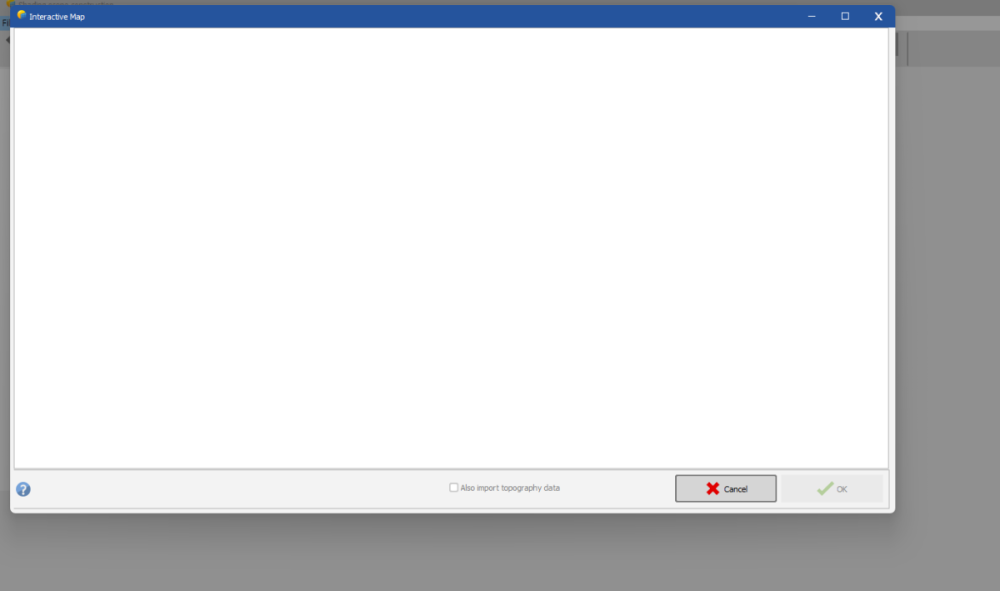All Activity
- Today
-
Dear Oli, Unbalanced inverters are not designed for power sharing. Regards,
-
Daily generation profile Irregularities
JamesLenton replied to JamesLenton's topic in Problems / Bugs
Hi Linda, We tried PVGIS and Meteonorm and saw similar anomalies on different days also. Weather data imported from those 2 sources shouldn't have missing data however? James. -
sorry ,i find a mistake in my sentence,the solar size is 210mm*105mm,so final result is 44/ ( 0.21*0.105*29) =25 = 94 (℃).The results are basically the same as those of pvsyst.
-
just choose "Generic_Mono_700W_Half_Bifacial.PAN" for example. Here, Uc = 29 W/m²·k, or say Uc = 29 W/m²·℃, and the size of the cell is 150 mm*210 mm. For one solar cell shading, if the temperature rises by 1 ℃, it need power 0.21*0.15*29= 0.9135(W),and the cell power consumption now is 45W,45/0.9135= 48.17 (℃),by adding 25 ° ambient,the result is 73.16(℃),which is not quite consistent with the results shown on the graph (95℃).Can you help me check if there are any errors in my deduction? thanks
- Yesterday
-
Pedro Silva joined the community
-
Kadam joined the community
- Last week
-
I don't have any the details of this system and haven't modeled solar edge in a long time. However, with a zone you can auto set table to fill the zone, auto tilt to adapt to slope of roof, set table size to 1x1, and then use module layout for allocation (electrical loss). Keep in mind this is just for shading calculation, not power, so you don't need it perfect. As long as it is reasonably close to capturing the shading conditions it should be fine. You create a single zone, insert masks, auto fill the zone as shown. This will allow you to model bifaciality.
-
Hi dtarin, thanks for the input. I can make a zone in a similar shape as the polygonal field, but when defining the Zone's Field Properties, I can only do a singular rectangular array - are you suggesting that I would have a bunch of little zones where I would need to align / elevate and line up each one in order to mimic the flush to roof mount shown above? The other factor that might complicate this the client wishes to use SolarEdge for this layout - not sure if using the zones in this manner would not be advisable then - ie defining the Module Layout's strings per inverter? Thanks again for the help and insight, much appreciated!
-
Hung MAI started following Potential Bug in "Weather data tables and graphs"
-
Hello, When working with a normal ground-based project, in "Weather data tables and graphs" , in both "Graph" and "Tables" tab, when I try to check for the monthly values of GHI and GTI, very often I see both values are the same, which is weird. Also PVsyst asks me for confirmation of the Plane Orientation, which I have already defined in System. Only when I try to see the value in Hourly, then it displays correctly , and then go back to the monthly values in both "Graph" and "Tables" tab, they will be display correctly. Steps: 1. Try to see monthly data, PVsyst ask for plane orientation 2. Monthly GTI = GHI ?? 3. Same when seeing in Table 4. Only when check the data in hourly mode, it seems to "fix" the bug 5. GTI and GHI in Graph and Table now correctly displayed
-
André Mermoud started following the temperature of shaded solar cell
-
In this tool, PVsyst tries to evaluate the temperature of the reverse-biased cell, as a function of the power consumed in this cell and the U-value (with resp. to 25° ambient). In this case this is not dangerous, but in usual modules the cell temperature may become very high: this is the hot spot problem.
-
Trackers rotation axes when Azimuth is different from 0°
AdelB replied to AdelB's topic in Shadings and tracking
it worked. thanks for your quick reply. -
Michele Oliosi started following Trackers rotation axes when Azimuth is different from 0°
-

Trackers rotation axes when Azimuth is different from 0°
Michele Oliosi replied to AdelB's topic in Shadings and tracking
When importing, you should have multiple choices to define the orientation: Can you try "longest edge" ? -
AdelB started following Trackers rotation axes when Azimuth is different from 0°
-
Hello PVsyst team, I am working on an Agri PV project where i have to respect the sense in which the crop is planted. Given that the crop is planted at -46.2°, i have to install my trackers accordingly. See picture below. The issue is that when I import the PVC scene on PVsyst and simulate the shading animation, the rotation axis used by PVsyst is N-S axis (as if the middle of the tables is the centre of of the rotation from south-east to north-west) while the intended rotation is supposed to be north-east -> south west) see picture below : (I'm putting the middel and the End of the simulation)
-
Michele Oliosi started following Albedo in .MET files and Finding out the reflection caused by the solar panels
-

Finding out the reflection caused by the solar panels
Michele Oliosi replied to Adeline's topic in Simulations
The issue of reflection is that it is not explicitly modeled by PVsyst (currently). You should therefore find an indirect way to estimate it, or, better, find another tool that is more adapted. Also you interested in the reflection as a directional quantity? (for the purposes of glare regulations, for example). Or is are you interested in the amount of light “lost” to reflection, as a way to understand the energy flows? -
@Leticia Currently, albedo is still stored in the weather file as monthly coefficients. This means that the time series will be summarized into monthly values. The hourly time series will be exploited in a later patch. These coefficients can then be used in the project settings, but it still requires going to the project settings and click on the button to copy the values from the MET file. Since these coefficients can end up in the project settings, they are currently intended to be used for the far albedo.
-
Kanagavel K started following Sang Han
-
Hello everyone, How to do power sharing for unbalance MPPT? I use SG50CX-P2 and 1 no. SG12RT. For SG12RT, I use 1 string per MPPT. During simulation error message show have to use all the main and all the secondary input and later I ticked the secondary input is not used for this inverter. but still I cannot so power sharing. How to do the power sharing for this inverter? Thank you in advance for your support.
-
in my opinion,the module VOC corrected by irradiance value and ambient temperature will be more reasonable for system design.
-
Dear PVsyst team: when some solar cell is partial shaded,how to calculate its temperature as shown in the following figure, thanks!
-
shkim joined the community
-
Hello Team, I am using V8.0.11 and trying to model Bifacial w/ Fixed Tilt Plane, Flush to Roof mount via Polygonal Fields - this is not compatible with bifacial 2D model - is this a bug or is there some way that I could model this irregular layout with bifacial (see snip of model)? I realize this flush to roof the bifacial factor will be very small, but the client is determined to confirm modeling this bifacial gain.. Any suggestions and thoughts are greatly appreciated, much thanks in advance! ie would converting to a Rectangular PV Array and trying to line up/match this jagged flush roof layout (as much as possible) allow the bifacial 2D model - or something else be a workaround? Thanks, Mike
-
Here's one way CCC could be incorporated into PVsyst, to enable more accurate modeling with standard hourly TMY datasets:
-
CarlosSolis changed their profile photo
-
Hello PVsyst Community, I’m a solar PV designer working on utility-scale projects and looking for an efficient way to import a 3D forest model into PVsyst. The goal is to perform accurate shading and horizon analyses, as nearby vegetation significantly impacts system performance. If anyone has experience or recommendations for importing realistic 3D vegetation or forest models into PVsyst—whether through SketchUp, terrain files, or other compatible formats—I would greatly appreciate your insights. Thanks in advance for your support! Best regards, Carlos
-
CarlosSolis joined the community
-
mazenalselwi joined the community
-
Leticia started following Albedo in .MET files
-
Hello everyone! I searched for documentation explaning better about the Albedo that is now available in version 8 to input in .MET files, but I didn't find any infformation. Can you please explain me better if the Albedo inputed in timeseries data would it be realted to albedo of the project, which is the albedo of the far terrain in front of the PV installation, or the albedo for the bifacial evaluation, that is the albedo of the ground below the installation.
-
Arjav joined the community
-
VASILIKI KANELLOPOULOLU joined the community
-
Dear Swonno, In this case, you should email us a support request at support@pvsyst.com with your PVsyst LOG files (menu <File> <Export logs>) so we can analyze what happened. Best regards.
-

Daily generation profile Irregularities
Linda Thoren replied to JamesLenton's topic in Problems / Bugs
Indeed it seems a bit surprising that the global irradiance would be 0 for a few hours in the middle of the day, but indeed possible. Using another weather data provider, do you see similar drops in irradiance? If you import a weather file with missing data, these hours will be considered as 0 in PVsyst. -
Hello, I am currently faced with some technical difficulties while doing the simulation and would like to make an enquiry... I am trying to find the reflection data from the solar panels from the simulations, so that we are able to study how bright the reflection would be during different hours of the sun. However, from the advanced simulation, data related to reflection only comprise of ground reflection on front side and back side. Understand that PVSYST is not able to give the direct data for total amount of reflection, is there any other methods where we can do a self-calculation from the data's derived from the simulation? I tried doing some research and had the hypothesis that from the law of reflection, incident angle = reflected angle on smooth surface. So, using that as a basis, the total IAM loss could also apply to the reflected angle. Meaning the reflected angle would also have the same IAM loss however, after much digging, I found that that might not be the case.. So I am actually quite stuck and confused.. T-T My knowledge of this is really at the basic level so I could really use some help. Thank you
-
khushbujewellers joined the community
-
Adeline joined the community
-
t Hello PVSyst team, I'm trying to import topology but it seems nothing downloaded well. Just looking white for few mins. Is it still having a bug or error?



